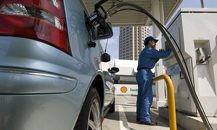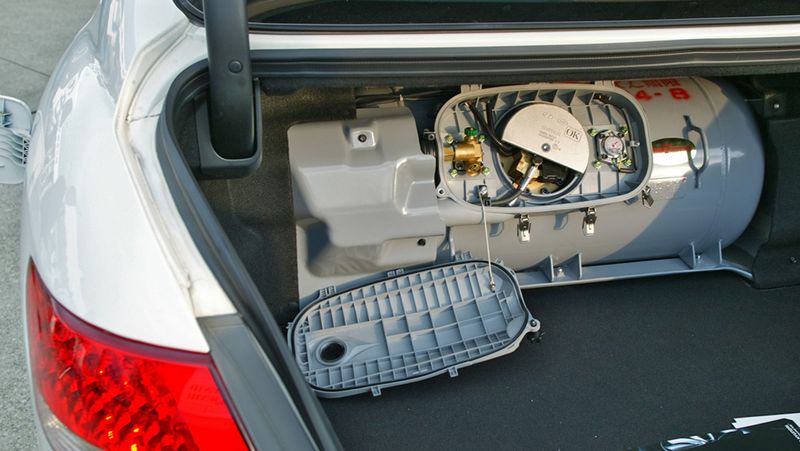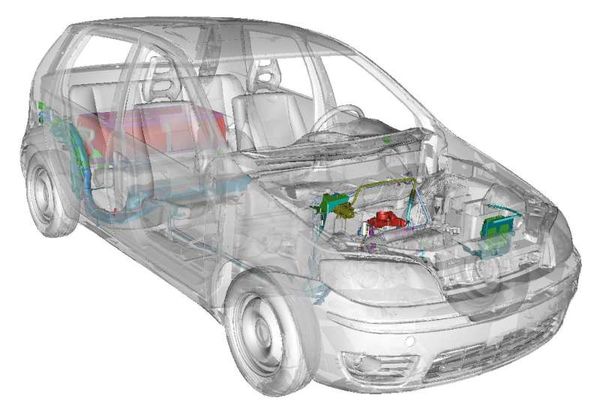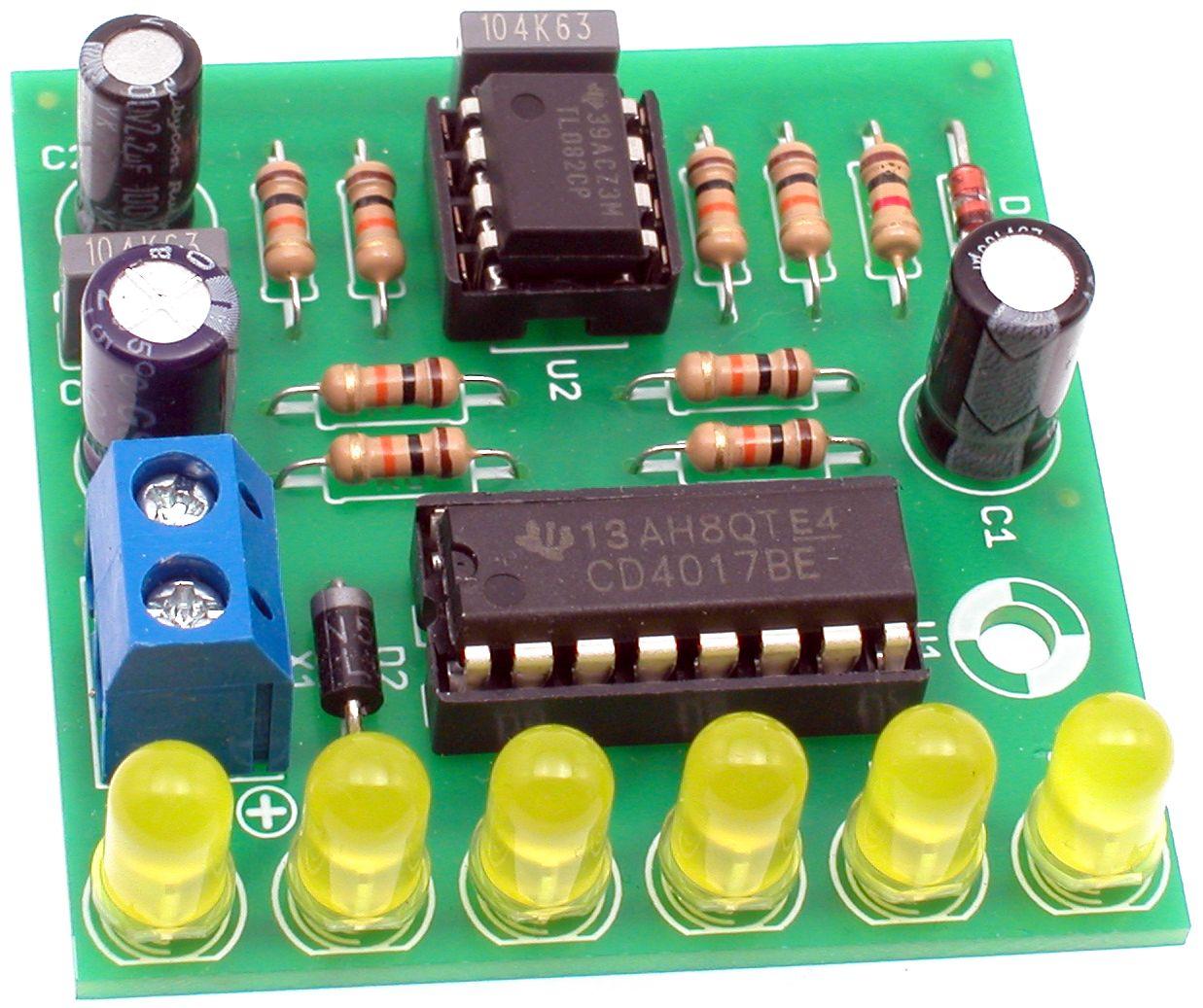
LPG or CNG? Which pays more?
On the so-called Many motorists look at gas vehicles with suspicion, and some even with disdain. However, this may change as conventional fuels become more expensive and the costs of using them increase. The larger difference between gasoline and diesel will then trigger a conversion or even skeptical motorists will consider buying an original modified car. In such a situation, prejudices go aside, and cold calculation wins.

There are currently two types of alternative fuels competing on the market – LPG and CNG. It continues to successfully drive LPG. The share of CNG vehicles is only a few percent. However, CNG sales have started to recover slightly recently, supported by long-term favorable fuel prices, new factory-modified car models, and sophisticated marketing. In the following lines, we will describe the main facts and point out the advantages and disadvantages of both fuels.
FUEL
LPG (Liquified Petroleum Gas) is short for liquefied petroleum gas. It has a natural origin and is obtained as a by-product in the extraction of natural gas and oil refining. This is a mixture of hydrocarbons, consisting of propane and butane, which is filled in cars in a liquid state. LPG is heavier than air, it falls and stays on the ground if it leaks, which is why cars running on LPG are not allowed in underground garages.
Compared to conventional fuels (diesel, gasoline), a car running on LPG produces significantly less harmful emissions, but compared to CNG, 10% more. The installation of LPG in vehicles is usually accomplished through additional retrofits. However, there are also factory modified models, but these represent only a small fraction of the total number of modified LPG vehicles. The most active are Fiat, Subaru, as well as Škoda and VW.
A dense network of gas stations, as well as professional installation and regular inspection services will delight you. In the case of retrofitting, it must be checked whether the vehicle (engine) is suitable for operation with LPG. Otherwise, there is a danger of premature wear (damage) of engine parts, especially valves, cylinder heads (valve seats) and seals.
Vehicles converted to LPG flaring are usually required to undergo a mandatory annual inspection. In the case of mechanical valve adjustment, the correct valve clearance must be checked (recommended every 30 km) and the oil change interval should not exceed 000 km.
On average, consumption is about 1-2 liters higher than when burning gasoline. Compared to CNG, the prevalence of LPG is much higher, but overall the number of vehicles converted to LPG remains the same. Apart from preconceptions, initial investment and regular checks, there are also many fuel efficient diesel engines.

LPG advantages
- Saves about 40% in operating costs compared to a petrol engine.
- Reasonable price for additional car re-equipment (usually in the range of 800-1300 €).
- Sufficiently dense network of gas stations (about 350).
- Storage of the tank in the reserve compartment.
- Compared to a petrol engine, the engine runs a little quieter and more accurate due to its higher octane number (101 to 111).
- Double drive car - more range.
- Lower soot formation than with gasoline combustion, respectively. diesel.
- Lower emissions compared to gasoline.
- Higher safety in the event of an accident compared to petrol (very robust pressure vessel).
- No risk of fuel theft from the tank compared to gasoline or diesel.
Disadvantages of LPG
- For many motorists, the initial investment seems high.
- Consumption is about 10-15% higher compared to gasoline.
- Decrease in engine power by about 5% compared to gasoline.
- Differences in gas quality and some risk of different filling heads in some countries.
- Entrance to underground garages is prohibited.
- Spare wheel missing acc. reduction of the luggage compartment.
- Annual inspection of the gas system (or according to the site documentation).
- Additional rework requires more frequent and slightly more expensive maintenance (valve adjustments, spark plugs, engine oil, oil seals).
- Some engines are not suitable for conversion - there is a risk of excessive wear (damage) to some engine components, especially valves, cylinder heads (valve seats) and seals.
CNG
CNG (compressed natural gas) is short for compressed natural gas, which is basically methane. It is obtained by extraction from individual deposits or industrially from renewable sources. It is poured into cars in a gaseous state and stored in special pressure vessels.
Emissions from combustion of CNG are significantly lower than from gasoline, diesel and even LPG. LNG is lighter than air, so it does not sink to the ground and flows out quickly.
CNG vehicles are usually modified directly at the factory (VW Touran, Opel Zafira, Fiat Punto, Škoda Octavia ...), so there are no problems with the warranty and other possible ambiguities, such as service. Retrofits are infrequent, mainly due to the large upfront investment and significant vehicle interference. So it is better to look for a factory revision than to think about additional conversions.
Despite the significant advantages, the prevalence of CNG is very low and represents only a small fraction of the number of vehicles running on LPG. Blame the higher initial investment in a new car (or refurbishment), as well as the very sparse network of gas stations. By the end of 2014, there were only 10 public CNG filling stations in Slovakia, which is very small, especially in comparison with neighboring Austria (180), as well as the Czech Republic (about 80). In the countries of Western Europe (Germany, the Netherlands, Belgium, etc.) the CNG filling station network is even denser.

Benefits of CNG
- Cheap operation (also cheaper compared to LPG).
- Low production of harmful emissions.
- Quiet and flawless engine operation thanks to its high octane number (approx. 130).
- Tanks do not limit the size of the space for the crew and luggage (applies to CNG vehicles from the manufacturer).
- Lower soot formation than with gasoline combustion, respectively. diesel.
- Double drive car - more range.
- No risk of fuel theft from the tank compared to gasoline or diesel.
- Possibility of filling with household filler from a common gas distribution system.
- Unlike LPG, there is the possibility of parking in underground garages - a modified air conditioner is sufficient for safe ventilation.
- Most cars are modified at the factory, so there are no conversion risks like LPG (worn valve seats, etc.).
Disadvantages of CNG
- Few public service stations and very slow expansion rates.
- Expensive additional renovation (2000 – 3000 €)
- Higher prices for original remanufactured vehicles.
- Decrease in engine power by 5-10%.
- Increase in the curb weight of the vehicle.
- Higher cost of components that need to be replaced at end-of-life.
- Re-inspection - revision of the gas system (depending on the manufacturer of the car or system).
Useful information about "gas" cars
In the case of a cold engine, the vehicle is started on an LPG system, usually gasoline, and after partially warming up to a predetermined temperature, it automatically switches to burning LPG. The reason is the better evaporation of gasoline even without additional heat removal from a warm engine and subsequent rapid ignition after ignition.
CNG is stored in a gaseous state, so it handles cold starts much better than LPG. On the other hand, more energy is required to ignite LNG, which can be a problem at lower temperatures. Therefore, cars that are converted to burning CNG at temperatures below freezing (approximately -5 to -10 ° C) usually start on gasoline and soon automatically switch to burning CNG.
In the long term, it is impractical for the same gasoline to remain in the tank for more than 3-4 months, especially for CNG vehicles that usually do not need to run on gasoline. It also has a lifespan and decomposes (oxidizes) over time. Consequently, various deposits and gum can clog the injectors or the throttle valve, which will adversely affect engine performance. Also, such gasoline increases the formation of carbon deposits, which quickly decomposes the oil and clogs the engine. Also, a problem may arise if there is summer gasoline in the tank and you need to start it up in severe frosts. Therefore, it is recommended to run on gasoline from time to time and "flush" the tank with fresh fuel.
Multiple likes
When buying, it is necessary to carefully test both drives (gasoline / gas), cold start, mode switching and it is not harmful if you still try the refueling method. The principle is not to buy a car with an empty tank (LPG or CNG) without the possibility of testing.
A vehicle equipped with LPG or CNG must undergo a regular system check, which depends on the documentation of the vehicle manufacturer or. system manufacturer. The result of each check is a report that the vehicle owner must have, which must be documented along with other documents (OEV, STK, EK, etc.).
The vehicle must have an LPG or CNG system registered in a technical certificate (OEV). If this is not the case, this is an illegal reconstruction and such a vehicle is legally unsuitable for driving on the roads of the Slovak Republic.
In the case of additional conversions, due to the installation of the tank in the trunk, the rear of the car is more loaded, which leads to somewhat faster wear of the rear axle suspension, shock absorbers and brake linings.
In particular, vehicles retrofitted to burn liquefied petroleum gas (CNG) may have more worn out some of the engine components (mainly valves, cylinder heads or seals). During a factory rebuild, the risk is lower because the manufacturer has modified the combustion engine accordingly. The sensitivity and wear of the individual components are individual. Some engines tolerate LPG (CNG) combustion without any problems, and the oil is changed quite often (max. 15 km). However, some of them are more sensitive to gas combustion, which is reflected in the faster wear of some parts.
Finally, a comparison of two Octavias running on alternative fuels. Škoda Octavia 1,6 MPI 75 kW - LPG consumption on average 9 liters and Škoda Octavia 1,4 TSi 81 kW - LPG consumption on average 4,3 kg.
| Fuel | FUEL | CNG |
| Calorific value (MJ / kg) | about 45,5 | about 49,5 |
| Fuel price | 0,7 € / l (approx.0,55 kg / l) | € 1,15 / kg |
| Energy required per 100 km (MJ) | 225 | 213 |
| Price for 100 km (€) | 6,3 | 4,9 |
* prices are recalculated as averages 4/2014

